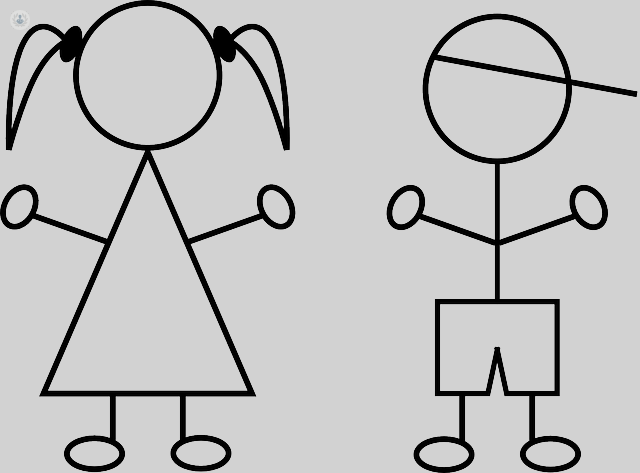Hip problems during childhood
Written by:Experts in child trauma claim that there are many problems that can affect a child's hip in childhood. These are different depending on age.

Dysplasia is the main childhood disease related to hip. In the newborn is the most common disease. Bebçé joint does not have a normal anatomy and this can cause hip dislocation with the resulting disabilities to walk or run.
During the first five years of life, are common hip synovitis boxes. It is limited to a few days inflammatory processes so are named as fleeting coxitis. They are also common infections affecting the joint itself or bones around it, femur or pelvis.
Between 5 and 7 years may appear called Perthes disease. This disease is characterized in that part of the femoral head undergoes necrosis, ie, the bone tissue dies.
Children who start puberty outbreak, especially if they have a very fast growth, can develop a problem of detachment of the growth area of the femoral head called epiphysiolysis.
Causes of infant hip problems
Hip dysplasia occurs more frequently in girls because they are more sensitive to maternal and these female hormones cause more laxity and ability to place the joint in forced positions during pregnancy. It is also associated with a breech position within the uterus because it puts the hip in an anomalous position. The existence of precedents in the parents increases the chance of developing dysplasia probably for anatomical constitutional factor.
As for synovitis of the hip, the cause is related to a viral upper respiratory tract infection (cold, bronquitits ...) in the days before and seems to be a reaction to that virasis distance.
Hip infections are in the context of the passage of a microorganism of the blood (eg wound from a skin scraping) and arriving at this joint. Unlike the adult, bone and joint infections are common in children.
The cause of Perthes disease remains unknown today in day. Although some studies point to a clotting disorder that can facilitate a local infarction in the femoral head, it may be that the process is multifactorial.
SCFE is produced by a mechanical weakness of the growth zone of the femoral head, which allows a displacement of the head relative to the neck anatomical deformity secondary or even complete detachment.
Treatment for childhood hip problems
Hip dysplasia is by placing a special harness that puts the femoral head oriented growth area of the socket, where articulated in the pelvis. This technique, which lasts about three months, stimulates the anatomically correct development of the hip. Hip synovitis is restricting physical activity and anti-inflammatory medication for the duration of symptoms.
Perthes disease is usually treated with physiotherapy there is a substantial contraction of the muscles around the hip. In more severe cases, a bone mechanical intervention to improve conditions and help bone regeneration of the necrotic area may be necessary.
In SCFE, the detachment block by fixing the femoral head to the femoral neck by a screw. In severe cases of large displacement, it must be made more complex surgery to restore the position of the femoral head to its anatomical position.
Surgery is required only in the case of hip infection. This is necessary to conduct an urgent cleaning in addition to antibiotic treatment for vein.
What happens if a child hip problem is not treated?
An untreated hip dysplasia can end up with a dislocation or joint destruction. This future will require complex surgery or placement of a joint prosthesis. If hip infection is not treated, a joint destruction can occur, leading to endanger the patient's life if the infection spreads. Epiphysiolysis untreated can develop into epiphyseal detachment and destruction of the hip joint. Perthes disease usually has a benign course when it affects young children but can also cause a change in the shape of the femoral head if regeneration is not done properly, causing loss of mobility and premature wear of the joint.
However, the transient synovitis not cause sequelae because it is a self-limited process.


